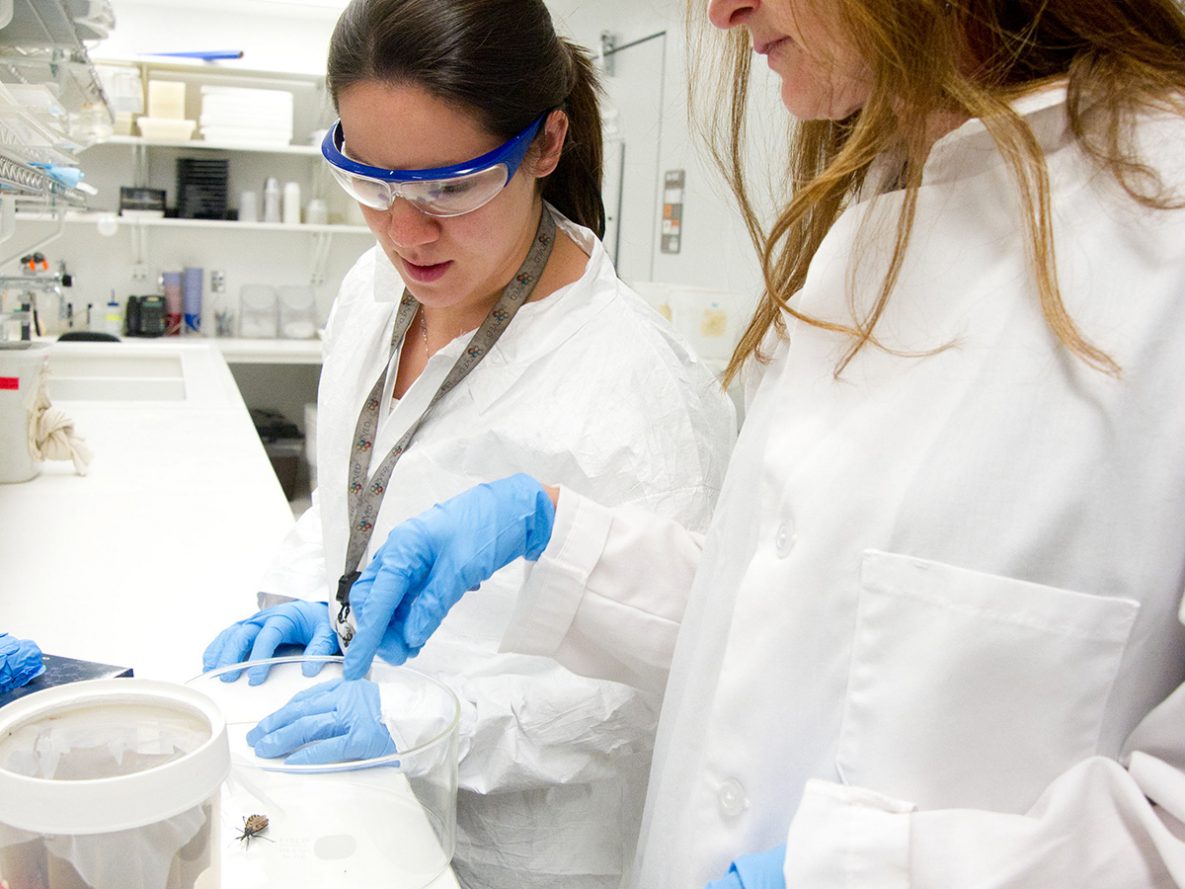Malaria
Malaria is a mosquito-borne disease caused by a parasite. People with malaria often experience fever, chills, and flu-like illness. Left untreated, they may develop severe complications and die. Within the last decade, increasing numbers of partners and resources have rapidly increased malaria control efforts. This scale-up of interventions has saved 3.3 million lives globally and cut malaria mortality by 45%, leading to hopes and plans for elimination and ultimately eradication.
What is the global impact of malaria?
- In 2016, an estimated 216 million cases of malaria occurred worldwide and 445,000 people died, mostly children in the African Region.
- About 1,700 cases of malaria are diagnosed in the United States each year. The vast majority of cases in the United States are in travelers and immigrants returning from countries where malaria transmission occurs, many from sub-Saharan Africa and South Asia.
- Where malaria is found depends mainly on climatic factors such as temperature, humidity, and rainfall. Malaria is transmitted in tropical and subtropical areas, where Anopheles mosquitoes can survive and multiply and malaria parasites can complete their growth cycle in the mosquitoes.
Who is at risk?
- The highest transmission is found in Africa South of the Sahara and in parts of Oceania such as Papua New Guinea. In many temperate areas, such as Western Europe and the United States, economic development and public health measures have succeeded in eliminating malaria. However, most of these areas have Anopheles mosquitoes that can transmit malaria, and reintroduction of the disease is a constant risk.
- While a number of companies and groups are working on developing a malaria vaccine, there is currently no effective vaccine on the market.
What is CDC doing?
- For more than 60 years, CDC has provided scientific leadership in public health efforts to fight malaria, increasing global capacity to prevent death and illness from malaria. CDC helped develop and evaluate four key global malaria interventions: long-lasting insecticide-treated nets (ITNs), rapid tests to diagnose malaria and artemisinin-based combination therapies to treat malaria patients; intermittent preventive treatment for pregnant women; and indoor residual house spraying (IRS)—all recommended by WHO and supported by The President’s Malaria Initiative (PMI). With PMI, CDC’s expertise in strategic science focuses on making sure these interventions remain effective and continue to save lives.
Malaria control is carried out through recommended malaria treatment and prevention interventions. Prevention focuses on mosquito control (for example, through insecticides, water storage methods, and bed nets) and sometimes preventative antimalarial or fever treatment. Treatment of a patient with malaria depends on the country’s national guidelines, which typically take into consideration the type (species) of the infecting parasite, the clinical status of the patient, any accompanying illness(es) or condition(s), pregnancy, drug allergies/other medications taken by the patient, and where the infection was acquired as well as the presence of antimalarial drug resistance there.

Malaria has long been a major cause of illness and death worldwide. In the United States, an average of 1,700 travelers to malaria-endemic countries return with malaria, and that average is increasing. Among those, about 300 cases present with severe malaria. Intravenous artesunate, the frontline treatment for severe malaria, is available from 18 CDC quarantine stations, strategically located at airports with high flight volumes.
The prevention and treatment of severe malaria is also a global health security priority. Drug resistant malaria parasites can move across borders. CDC supports strengthening national health systems and capacity to detect and identify resistant strains of malaria parasites worldwide.
CDC and FDA are committed to working with clinicians and public health partners to provide the best possible care and access to treatment for patients with severe malaria.
Learn More:
- Media advisory : Joint Statement (9/16/19): CDC/FDA: Access to New Front-Line Treatment for Severe Malaria is a Top Priority for U.S. Agencies
- CDC Clinician Guidance for Treating Severe Malaria
- American Journal of Tropical Medicine & Hygiene’s editorial: Expanded availability of intravenous artesunate for the treatment of severe malaria in the United Statesexternal icon
- CDC’s Malaria Notice
- Center for Global Health’s Division of Parasitic Diseases and Malaria
Artesunate – CDC in the News
Pharmacy Times: New CDC Guidance Recommends Artesunate as First-Line Treatment for Severe Malariaexternal icon – March 29, 2019
“Artestenate is the world standard. The ideal situation would be to have our artesunate FDA approved. Until then, we have this mechanism to have it released [on a limited basis].”
-Dr. Katherine Tan, Domestic Malaria Branch, CGH’s Division of Parasitic Diseases and Malaria
Infectious Disease News: Artesunate becomes first-line treatment for severe malaria in USexternal icon – March 28, 2019
- Browse malaria publications
- Download the CDC and the U.S. President’s Malaria Initiative fact sheetpdf icon
- Read CDC’s latest news releases
- Browse Global Malaria images on the CGH Flickr stream or search by topic or country.
- Search images by topic on the Public Health Image Library (PHIL).
- Learn more about malaria prevention and treatment
Contact media relations to speak with a CDC Global Health malaria expert
media@cdc.gov
(404) 639-3286
(9:00 am – 6:00 pm)
(770) 488-7100
(After Hours)



